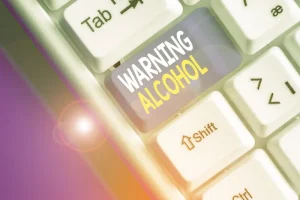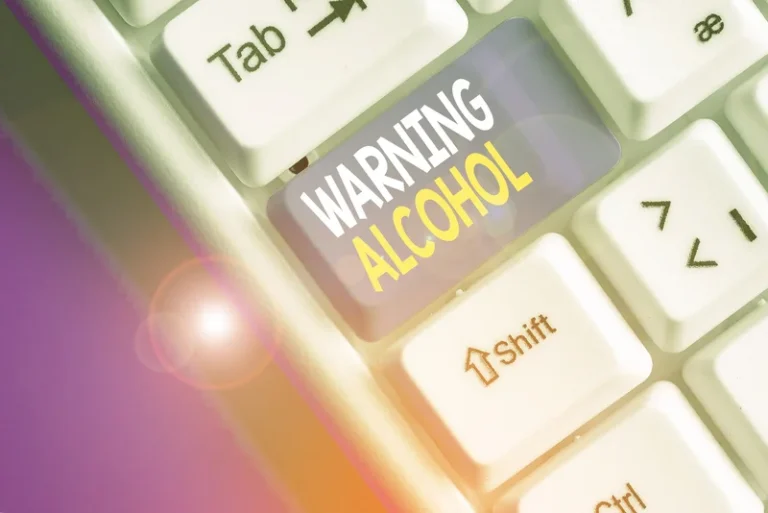
Following this a decisional matrix can be drawn where pros and cons of continuing or abstaining from substance are elicited and clients’ beliefs may be questioned6. Interpersonal relationships and support systems are highly influenced by intrapersonal processes such as emotion, coping, and expectancies18. For example, I am a failure (labeling) and will never be successful with abstaining from drinking, eating healthier, or exercising (jumping to conclusions). Instead of sinking into self-blame, reframe setbacks as temporary obstacles rather than insurmountable failures, and replace blame with self-compassion and understanding.
Clinical Psychology Review
The overarching goal of the present research was to examine the way psychological responses to lapses influenced quitters’ ability to maintain abstinence. We used EMA measures of three core components of the AVE (internal attribution of self-blame for the lapse, abstinence self-efficacy and guilt) obtained at the time of lapse as smokers struggled to avert relapse over the course of 6 weeks after quitting. EMA captured the timing of lapses, the amount smoked during each lapse episode, and participants’ immediate AVE responses. Recurrent-event survival models were used to evaluate the extent to which AVE responses to each successive lapse influenced the hazard of an additional lapse. Recurrent lapses and AVE responses were thus expected to synergistically drive one another toward relapse, and our analysis attempts to capture and elucidate this cascading downward spiral driven by cognitive and affective responses to recurrent lapses during self-imposed abstinence. First, as we wanted to keep the generation of statements feasible and non-confusing for the participants, we formulated one focus statement in which the predictors of physical activity and dietary behavior were combined and no distinction between lapse and relapse was made.
Social Media+ Society
This type of policy is increasingly recognized as scientifically un-sound, given that continued substance use despite consequences is a hallmark symptom of the disease of addiction. Although it may be helpful for treatment centers to incorporate small penalties or rewards for specific client behaviors (for example, as part of a contingency management program), enforcing harsh consequences when clients do not maintain total abstinence will only exacerbate the AVE. Given data demonstrating a clear link between abstinence goals and treatment engagement in a primarily abstinence-based SUD treatment system, it is reasonable to hypothesize that offering nonabstinence treatment would increase overall engagement by appealing to those with nonabstinence goals. Indeed, there is anecdotal evidence that this may be the case; for example, a qualitative study of nonabstinence drug treatment in Denmark described a client saying that he would not have presented to abstinence-only treatment due to his goal of moderate use (Järvinen, 2017). To date, however, there has been little empirical research directly testing this hypothesis.
- However, previous research indicates that environmental factors, such as a tempting environment, also influence relapse (Roordink et al., 2021).
- Based on operant conditioning, the motivation to use in a particular situation is based on the expected positive or negative reinforcement value of a specific outcome in that situation5.
- When abstinence is violated, individuals typically also have an emotional response consisting of guilt, shame, hopelessness, loss of control, and/or a sense of failure; they may use drugs or alcohol in an attempt to cope with the negative feelings that resulted from their abstinence violation.
- Clinical outcomes have been reported elsewhere (Shiffman, Ferguson, & Gwaltney, 2006; Shiffman, Scharf, et al., 2006).
- The assumption of RP is that it is problematic to expect that the effects of a treatment that is designed to moderate or eliminate an undesirable behaviour will endure beyond the termination of that treatment.
Data Availability Statement
The abstinence violation effect (AVE) highlights the distinction between a lapse and relapse. Put simply, the AVE occurs when a client perceives no intermediary step between a lapse and a relapse. For example, overeaters may have an AVE when they express to themselves, “one slice of cheesecake is a lapse, so I may as well go all-out, and have the rest of the cheesecake.” That is, since they have violated the rule of abstinence, they “may as well” get the most out of the lapse. Treatment in this component involves describing the AVE, and working with the client to learn alternative coping skills for when a lapse occurs, such that a relapse is prevented. The AVE occurs when a client is in a high-risk situation and views the potential lapse as so severe, that he or she may as well relapse.
People who attribute the lapse to their own personal failure are likely to experience guilt and negative emotions that can, in turn, lead to increased drinking as a further attempt to avoid or escape the feelings of guilt or failure7. For someone in the throws of an eating disorder (or even in eating disorder recovery), a perceived lapse in their prescribed eating plan or body image goals can trigger intense feelings of guilt, shame, and self-blame. This can create a cycle of negative emotions that may lead to further restrictive behaviors, binge eating, or other harmful coping mechanisms. Our analyses also shed light on the role played by NRT assignment, demonstrating the extent to which nicotine patch treatment prevents progression across a series of repeated lapses. Shiffman, Scharf, et al (2006) showed that treatment with high-dose patch impeded overall progression from the first lapse to relapse.
Reactivity to written mental arithmetic: Effects of exercise lay-off and habituation

Lapse management includes drawing a contract with the client to limit use, to contact the therapist as soon as possible, and to evaluate the situation for factors that triggered the lapse6. Approach coping may involve attempts to accept, confront, or reframe as a means of coping, whereas avoidance coping may include distraction from cues or engaging in other activities. Approach oriented participants may see themselves as more responsible for their actions, including lapse, while avoidance-based coping may focus more on their environment than on their own actions14. Taylor may think, “All that good work down the drain, I am never going to be able to keep this up for my life.” Like Jim, this may also trigger a negative mindset and a return to unhealthy eating and a lack of physical exercise. abstinence violation effect Maintain a balanced lifestyle by eating healthily, exercising regularly, getting enough sleep, and engaging in activities that bring you happiness and fulfillment.
- For example, our data demonstrate that the lapse progression process is highly variable both between individual participants and across momentary circumstances.
- Many smoking cessation studies have sought to identify factors that influence cessation success versus failure.
- Because of heightened overdose risk, treatment providers can offer naloxone and overdose prevention training to all clients, even those whose “drug of choice” does not include opioids.
- More and more, behavioral health organizations are moving away from “kicking people out of treatment” if they return to substance use.
The neurocognitive correlates of non-substance addictive behaviors
The RP model views relapse not as a failure, but as part of the recovery process and an opportunity for learning. Marlatt (1985) describes an abstinence violation effect (AVE) that leads people to respond to any return to drug or alcohol use after a period of abstinence with despair and a sense of failure. By undermining confidence, these negative thoughts and feelings increase the likelihood that an isolated “lapse” will lead to a full-blown relapse. If, however, individuals view lapses as temporary setbacks or errors in the process of learning a new skill, they can renew their efforts to remain abstinent.

Participants

Identify triggers that may have contributed to the relapse and develop strategies to address them proactively in the future. Counteracting the effects of the AVE is necessary to support long-term recovery from addiction. As a result, the AVE can trigger a cycle of further relapse and continued substance use, since people may turn to substances as a way to cope with the emotional distress. The Abstinence Violation Effect is a psychological phenomenon that occurs when a person experiences relapse after attempting to abstain from drug or alcohol use. Note that these script ideas were pulled from a UN training on cognitive behavioral therapy that is available online.

Journal of Affective Disorders
These individuals also experience negative emotions similar to those experienced by the abstinence violators and may also drink more to cope with these negative emotions. In a similar fashion, the nature of these attributions determines whether the violation will lead to full-blown relapse. The research team discussed whether fewer or more clusters would represent participants’ statements better, by evaluating the coherence between statements in each cluster. After defining the final number of clusters, each statement within a cluster was evaluated and allocated to a perceived predictor (e.g. the statement ‘lack of motivation’ was allocated to the perceived predictor ‘motivation’). Subsequently, the research team named all clusters, thereby keeping the names given by the participants in consideration.





